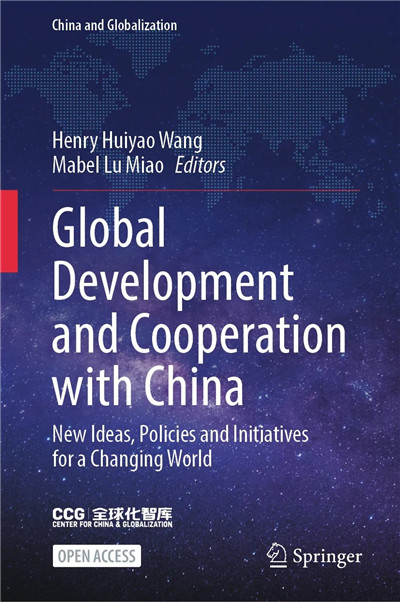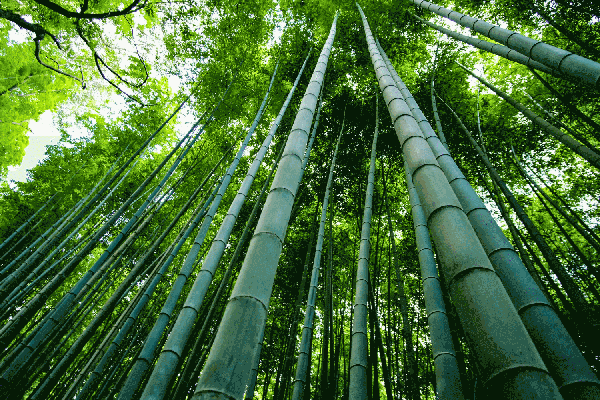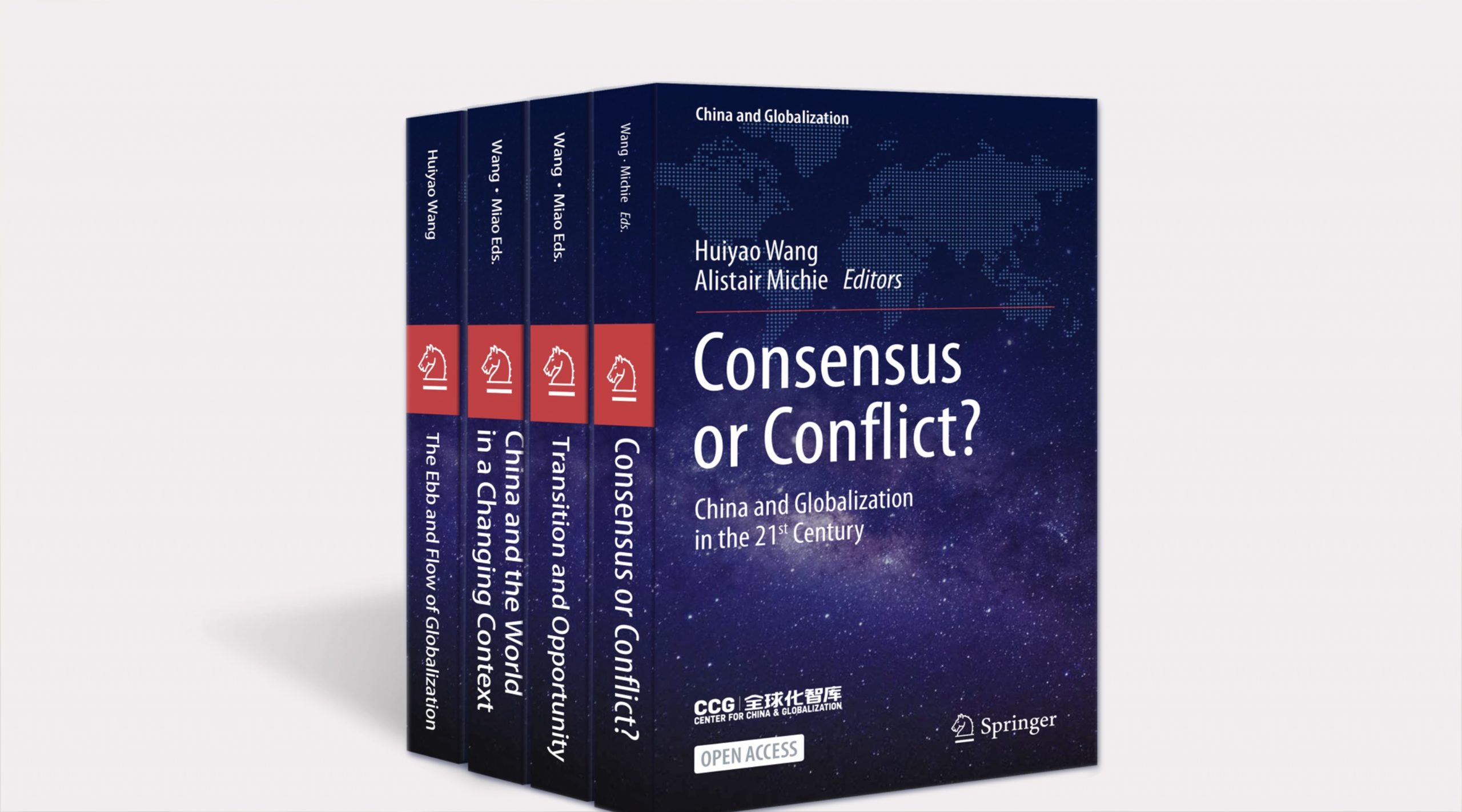Bamboo: A Potential Tool for Climate Change Mitigation and Adaptation
By Ali Mchumo and Renfei Wang
With 50 member states and five regional offices located, INBAR has been making a real difference in the lives of millions of people and environments around the world, raising standards, promoting bamboo construction, restoring degraded land, capacity-building, and driving green policy and SDG objectives. With the rapidly intensifying climate crisis and the setting of carbon neutrality targets necessitates new solutions and sustainable materials, bamboo serves as a nature-based solution for climate change mitigation and adaptation.
Introduction: INBAR
The International Bamboo and Rattan Organisation (INBAR) is an intergovernmental organization that promotes environmentally sustainable development using bamboo and rattan. INBAR has50Member States. In addition to its secretariat headquarters in Beijing, it has five regional offices located in Cameroon, Ecuador, Ethiopia, Ghana, and India. Since its founding in 1997, it has been making a real difference in the lives of millions of people and environments around the world, with achievements in areas, such as raising standards, promoting safe, resilient bamboo construction, restoring degraded land, capacity-building, and informing people and organizations on green policy and Sustainable Development Goal objectives.
INBAR’s Strategy 2015–2030 is to carry the message of the promise of bamboo and rattan as practical and economically attractive options in building sustainable solutions to the challenges of future development that producers and users of these products face. This strategy focuses on INBAR’s efforts in four main areas:
• Policy shaping: Promoting the inclusion of bamboo and rattan in socioeconomic and environmental development policies at national, regional, and international levels.
• Representation and advocacy: Coordinating input on bamboo and rattan from a growing global members and partner network and representing the needs of members on the global stage.
• Knowledge sharing and learning: Sharing knowledge and communicating lessons learned, providing training and raising awareness of the relevance of bamboos and rattans as plants and commodities that can contribute to relevant Sustainable Development Goals, Aichi Targets, REDD+, and other relevant global, regional, or national frameworks.
• Action research and country support: Promoting adaptive research and innovation by piloting best practices and providing expert support to INBAR member states in the scaling-up of best practices.
Bamboo
An Introduction to Bamboo
Bamboo refers to a group of perennial evergreen plants belonging to the Poaceae family under the subfamily Bambusoideae. From a biological point of view, bamboo is a giant grass rather than a tree and can be categorized into two main types based on the nature of its rhizome system: sympodial (clump-forming) and monopodial (non- clump-forming). Clumping bamboo displays sympodial components in their rhizome structures, and each rhizome turns upward to form a culm. Running bamboo exhibits monopodial rhizomes and spreads horizontally through the growth of rhizome.
According to the FAO Forest Resource Assessment 2020, bamboo grows across an area of 35 million hectares. Bamboos are integral to forest ecosystems and also part of agricultural landscapes, acting as boundaries, shelterbelts, blockplanting, and homesteads. There are 1642 known bamboo species belonging to over 120 genera distributed across tropical and subtropical regions worldwide. Out of these 1642 bamboo species, an approximated 1500 species are characterized as woody bamboo, while the rest are herbaceous bamboo. Most species have hollow internodes, while a few species have solid culms. Different bamboo species grows in different agro-climatic conditions, and the height, diameter at breast height, internode length, and color vary considerably between different bamboo species. Similarly, different bamboo species are amenable to different applications, providing opportunities for wide range of product and commercial applications.
Bamboo is mainly distributed in the Asia-Pacific, Sub-Saharan African, and Latin American regions, growing at elevations from sea level to 4000 m.a.s.l. The Asia- Pacific region is a hot-spot of bamboo biodiversity, comprising the largest bamboo growing area and leading regioninbambootechnology. About45%ofglobalbamboo resources and 80% of bamboo species are found in the Asia-Pacific region. In this region, bamboo is widely used as food, pulp and paper, daily use products, household utilities, in the construction industry, transportation, agriculture, fisheries, textiles, and a plasticsubstitute. Themostcommonlyfoundbamboo generaintheAsia-Pacific region are Bambusa, Dendrocalamus, Gigantochloa, Indocalamus, Phyllostachys, and Schizostachyum. Bamboo is integral to cultures and civilizations in this region. Countries, such as China, India, Indonesia, Japan, Vietnam, Malaysia, and Thailand, play important roles in global bamboo resource conservation, bamboo product manufacturing and trade, as well as technological innovation.
In Africa, bamboo can be found from Sudan to South Africa and from Senegal to Ethiopia as well as in the islands of Madagascar and Mauritius. A recent record shows there are 115 bamboo species distributed across 48 African countries. Two indigenous species, Oxytenantheraabyssinica and Oldeania alpina, are most widely distributed and have high economic importance. Africa is also an important region for bamboo in South-South cooperation. Several countries, specifically Ethiopia, Kenya, Uganda, and Madagascar, have already issued policies, strategies, and plans to develop bamboo value chains as part of national efforts to improve the livelihoods of their people and climate change mitigation strategies.
In Latin America, bamboo can be found between 28° N (Mexico and the West Indies) to 47° S (Chile and Argentina), with a total of 569 species (including all the herbaceous bamboos). Bamboo has been found in more than 20 countries in Latin America and the Caribbean, but existing databases of bamboo resources is only based on a few countries. Brazil, Colombia, Venezuela, Peru, Mexico, and Ecuador have a rich biodiversity in bamboo and widest distribution. Chusquea is the most commonly found bamboo genus in Latin America, while Guadua angustifolia and Dendrocalamus asper are the most economically important.
There are only three indigenous bamboo species in North America, and no indigenous bamboo species have been found in Europe. In recent decades, European countries, as well as the United States and Canada, have introduced a large number of bamboo species from some bamboo producing countries in Asia, Africa, and Latin America for landscaping and gardening purposes.
Uses of Bamboo
Bamboo is one of the fastest-growing plants in the world—some species can grow over1meter a day. New bambooshoots can attaintheirfullheight(ashigh as30mand 30 cm in diameter) within 3–4 months of spouting, after which they begin to mature. Depending on species,bambootakes about3–6years to reachfullmaturity.3–4-year-old bamboo culms of sympodial bamboo species are ideal for structural applicationsas well as for being processed into industrial products. Older bamboo poles or culms die and deteriorate with age. Efficient use of bamboo resources requires selective harvesting of mature bamboo poles, which will be replaced by new bamboo culms. Thus, bamboo plantations can ensure a sustainable supply of raw material without deforestation or destruction, while continuously providing ecosystem services.
Its rapid growth, ability to be harvested annually, and quick maturation cycle make bamboo a sustainable resource for value-addedindustrialapplications. Withthe technological development over the past four decades, bamboo has provided added value and been applied in 10,000 documented products and applications. Using traditional techniques, bamboo can be processed into a variety of products with little or no investment. Bamboo is widely used as an alternative to wood to build houses, requiring little processing to create columns, roofs, walls, floors, beams, trusses, and fences. It is estimated that about 1 billion people worldwide live in bamboo houses,most of them traditional houses that use bamboo poles as the main structural material. Apart from construction, bamboo is also used for the production of a number of common household products, such as furniture, mats, tools, hats, and traditionaltoys. Bambooisalsousedinmaking more elaborateandartistictraditional bamboo products, including musical instruments and woven items, such as baskets, trays, bottles, jars,boxes, bowls, fans, screens, curtains, lampshades, and lanterns. Bamboo shoots are an importantfood source and a delicacy inmanybamboo growing countries, especially in SouthEast Asia. In general, processing is carried out by rural communities, providing them with livelihoods and income.
Through technologicalinnovationinrecentdecades,bamboohasbeen exploitedto explorethepotential ofhigher value-addedapplications. Theusage ofbambooaffects multiple industries including modern constructions, infrastructure, furniture, pulp, paper and textiles, renewable energy, and artworks, among many others. Bamboo is currently processed into boards, laminated lumber, furniture, flooring, plywood, scrimber boards, composite materials, fibers and textiles, pulp and paper, bioenergy, plastic substitutes, and a wide range of daily use products. Other technologies have been developed and matured to make full use of the bamboo plant including the conversion of leaves into flavonoid products, beverages, and pharmaceutical applications.However, bamboo high value-added applications are mostly concentrated in few advanced bamboo processing countries like China. Improving the visibility of various bamboo products, eliminating misconceptions, and facilitating technology transfer from countries that have advanced bamboo industries are crucial.
Bamboo and Rattan Markets
Over the past two decades, the bamboo industry has grown rapidly. In 2020, the international trade value of bamboo and rattan commodities reached USD 3.4 billion, representing an increase of 89.6% compared with 2010. The most traded bamboo commodities are (a) daily use products, (b) bamboo tableware and kitchenware, (c) woven bamboo products, (d) bamboo shoots, and (e) bamboo furniture. Currently, there are 24 harmonized systems (HS code) for bamboo and rattan commodities, of which 18 are for bamboo and six are for rattan. Due to their similarity with wood products, many bamboo and rattan commodities are misclassified under existing Harmonized Systems, which leads to a low estimate of the value of the global bamboo and rattan trade.
China is the biggest exporter of bamboo and rattan, accounting for 70% of global trade value of bamboo and rattan commodities. Other major exporters include Indonesia, Vietnam, and the Philippines. The European Union, United States of America, and Japan are top three importers of bamboo and rattan commodities, accounting for 30%, 27%, and 11% of global import value, respectively.
China’s Bamboo Industry
China has one of the largest bamboo resources and the most advanced bamboo industry in the world. Currently, bamboo grows across over 7 million hectares, increasing rapidly from 3.2 million hectares in the 1970s thanks to planning and consistent development efforts. Bamboo is found in 18 provinces, with the highest concentration in Fujian, Jiangxi, and Zhejiang. The most important bamboo species in terms of cultivation and value added is Phyllostachys edulis (commonly known as Moso bamboo). China’s export trade value of bamboo commodities has reached USD 2.76 billion. In 2020, the annual output value of China’s bamboo industry reached RMB 320 billion (~ USD 50 billion). By 2035, the Chinese government expects the total output value of the bamboo industry to exceed RMB 1 trillion. There are more than 10,000 bamboo processing enterprises in China, and nearly 10 million people are directly engaged in bamboo industry. China has developed more than 200 bamboo-related standards, accounting for about 90% of global standards on bamboo. The bamboo industry is listed as one of the four most promising forest industries in China, and the Chinese government has actively formulated frameworks and plans to support the development of the industry. This includes the National Bamboo Industry Plan (2013–2020), which has been implemented at the national level to propel bamboo development. Bamboo development plans for accelerating the innovative development of the bamboo industry in the coming decades are also being finalized.
Climate Change—Bamboo, Carbon, and Communities
Climate change has posed many unprecedented challenges across the globe: frequent extreme weather, longer lasting droughts, disturbed wildlife habitats, decreasing biodiversity that are direct impacts on the livelihoods, income, and health of people and the planet. With a rapidly intensifying climate crisis and the setting of carbon neutrality targets, the need for solutions and sustainable materials are increasing. Bamboo is a nature-based solution for climate change mitigation and adaptation. The rapid growth rate and carbon storing capabilities make bamboo suitable as a timber substitute, energy crop, and can be manufactured into a wide range of prod- ucts, which makes it a highly suitable material for use in the fight against climate change. Furthermore, bamboo’s proven uses in providing people with livelihoods and opportunities for economic development address multiple aspects of development potential.
Mitigating Climate Change
The potential ofbamboofor sequesteringcarbonis enormous. Bamboo can contribute toclimatechangemitigationinthree ways. First,like any otherplant,bambooabsorbs carbon from the atmosphere and sequesters it in the ecosystem. Carbon in bamboo is stored as aboveground biomass in bamboo culms and leaves and as below-ground biomass in the form of rhizomes and root systems. The carbon content of bamboo is similar to trees. However, when compared to trees, bamboo grows more rapidly and has a higher annual re-growth rate, which makes bamboo a net sink for carbon dioxide. Recent research reveals that the average annual carbon sequestration of 1 ha of managed Moso bamboo forest is 4.91–5.45 tons, which is 1.5 times more than a Chinese fir plantation and 1.33 times more than a tropical rain forest. A review of biomass and carbon storage for 70 bamboo species illustrates that the average aboveground carbon (AGC) biomass, below-ground carbon (BGC) biomass, and soil carbon biomass for bamboo ranges from 16–128 Mg C/ha, 8–64 Mg C/ha, and 70–200 Mg C/ha, respectively. With an estimated bamboo coverage of 35 million ha across the globe, the carbon storage of global bamboo forest ecosystems is estimated to be 3.3–13.7 gigatons, which is equivalent to 12–50 billion tons of CO2 . Compared to tree forests, bamboo forests are easier sustainably manage. Through selective harvesting, biomass and carbon stock can be kept at a constant level. New culms that bamboo forests produce every year offset the loss of harvested biomass and carbon storage.
Second, because of its rapid growth rate and competitive physical properties, bamboo can be processed into durable products that can lock in carbon for longer periods of time. Mature bamboo stems can be converted to industrial products that have a much longer lifespan than the bamboo harvesting cycle. Given that nearly 40% of greenhouse gas emissions come from the construction sector, bamboo can play an important role in reducing carbon emission by replacing carbon-intensive materials. Studies on thecarbonfootprint ofengineeredbambooindicatethatbamboo products can be carbon-negative throughout their entire lifespan, including products that are transported to and used in Western European countries. A number of cases have successfully demonstrated the potential of integrating durable bamboo products into modern construction including the fourth terminal of the Madrid International Airport,which included a curved bamboo ceiling that meets the highest European fire safety standard M1. Bamboo was also used in interior decoration shaped according to the acoustic needs and architectural elements in the Wuxi Grand Theatre.
Third, bamboo products can be a sustainable substitute for high carbon-intensive products. With the target to reach carbon net zero by 2050, carbon-intensive industries, such as steel, aluminum, concrete, and PVC, are facing the urgent need to transition to carbon neutral industries. Bamboo can be used to substitute a certain amount of carbon-intensive products, such as fuel-based energy sources, plastic products, construction materials, and more. Bamboo could be a good option for speeding up energy source transitions. Bamboo charcoal is a renewable and clean energy source with a high heat value, but without generating smoke when it is burnt. Currently, bamboo charcoal is widely used in China, Ethiopia, Ghana, India, Madagascar, Mozambique, the Philippines, and Vietnam. Bamboo-based energy plantations are also emerging in South Africa, Sri Lanka,Philippines, Ghana, and India. Bamboo can also be used to generate bio-ethanol and bio-CNG for energy/electricity purposes. An estimated 1.2 kg of bamboo can generate 1 kWh of electricity, which is similar to the biomass of wood and better than the biomass generated by other powdered materials, such as peanut shells, coffee bean shells, and rice hulls.
Bamboo is also an effective tool to combat plastic pollution. In 2022, INBAR and the Chinese government jointly launched the “Bamboo as a Substitute for Plastic Initiative,”which aims to radically scale up the use of bamboo as a renewable resource to reduce plastic pollution and address climate change. The accumulation of plastics in natural environment has caused enormous terrestrial and aquatic pollution. More than 400 million tons of plastics are produced worldwide every year, and single-use plastic products consist for more than half of it. Unfortunately, more than 90% of single-use plastic products are not recycled. Bamboo, as a naturally biodegradable material, has great potential in replacing plastic toothbrushes, straws, bottles, cutting boards, bags, and more.
Climate Change Adaptation
Bamboo is an excellent tool for climate change adaptation in construction, preventing ecosystem degradation, restoring degraded ecosystems, providing protection, and diversifying jobs and incomes. Bamboo has a strong and extensive root system that holds the surface soils in place and improves soil quality. Bamboo is especially useful for restoring degraded land, eroded slopes, mining lots, and landslide vulnerable areas. Bamboo grows over a large part of the world’s poorest regions, which is also the most vulnerable region to climate change. Bamboo’s rhizomes can withstand floods and hold on to mud to prevent soil depletion and contribute to flood control. In the Northern Savannah of Ghana, a prolonged dry climate, unsustainable land management practices, forest fires, and other natural disasters have led to a reduction in vegetation cover, which has resulted in a limited capacity to retain and drain water and hold nutrients. To combat this, the government initiated a program to reduce land degradation using bamboo to protect buffer zones on riverbanks. Farmers were provided with free bamboo seedlings and received training on bamboo cultivation. Within around six months of planting, five-meter tall stands of bamboo appeared— other plants would take longer to reach this height. This bamboo will be fully utilized by local people in value-added production and fodder.
Bamboo can be a suitable tool to enhance the income and self-reliance of farmers. Bamboo grows in a variety of climates and can adapt to degraded lands. In China, India, and Thailand, different bamboo agro-forestry models have proved to benefit farmers and the poor by providing off-season fodder for livestock, additional income, and as a windbreak. Bamboo is also used for agricultural piping in Tanzania and also to supply water from natural streams to farms in North-Eastern India, while 30,000 bamboo shallow tube wells are used in irrigation in Bangladesh. Bamboo also generates numerous job opportunities along the entire value chain, specifically in activities related to the management of bamboo forests, harvesting, pre-processing and processing, which create employment and a source of income for rural communities. The established supply chain in China’s bamboo sector employs 10 million people, with 80% being small enterprise and/or rural jobs. A study conducted in Vietnam revealed that the daily wages earned from managing restored landscapes with bamboo surpassed those earned from agricultural activities.
Bamboo’s high tensile strength, flexibility, and lightness make it an ideal construction material for post-disaster recovery. Bamboo shelter prototypes have already been constructed in some countries, such as China, Ecuador, Ethiopia, India, Nepal, and Bhutan, among others. To withstand floods and tornadoes, bamboo is traditionally used in the construction of raised stilt houses in the Philippines, Ecuador, and Peru. Bamboo has also been used in reconstruction projects in post-earthquake areas in Sichuan, China. Bamboo was used to build low-cost, resilient shelters, and the sustainable supply chains of bamboo-based panels were developed to support the reconstruction efforts.
Conclusion
Bamboo benefits the world as a strategic resource to protect landscapes, biodiversity, support rural development, and achieve UN Sustainable Development Goals, yet its potential is still unrecognized and underestimated. Bamboo is widely available in Asia, Africa, and Latin America, especially in many of the least developed countries. Little or no investment is required, and the techniques required to start up bamboo processing programs in bamboo-rich areas are easy to learn. Proper harvesting practices do not affect the ecosystems of bamboo forests, while the value added of bamboo materials offers livelihood opportunities to local communities. The remarkable carbon sequestration capacity, the contribution to ecosystem restoration, soil and water conservation properties, and potential substitution of carbon-intensive materials and plastics make bamboo a perfect choice for addressing pressing challenges like climate change, achieving sustainable development, and benefiting both human beings and the planet.
INBAR, together with its 50 Member States, currently works to promote bamboo and rattan within the framework of the UNAgenda for Sustainable Development. To wield bamboo as an effective tool against the impacts of climate change, specific strategies and action should be implemented. These include (1) strengthening bamboo resource base through the restoration of degraded lands and sustainablemanagementof existingbamboo resources;(2)undertakingprogressive bamboo industry development with targeted interventions and actions according to the development stage of individual localities; (3) undertaking interventions or actions in a small geographical cluster to validate proof of concepts for cluster-based species development, sustainable management, and on-farm processing, which should be integrated and supported; (4) adopting a value chain approach or circular economic model where the product structures can be optimized to increase utilization rates and minimize wastage; (5) converging resources to support actions across the value chain by formulating appropriate policies, strategies, and plans; (6) generating demand in theinitialperiod ofbamboosectordevelopmenttoprovidemarketpull;(7)supporting R&D and innovation to develop products as per market preferences; and (8) creating an overall enabling environment for all stakeholders to flourish.
Ali Mchumo is Chair of the Board of Trustees and former Director-General of the International Bamboo and Rattan Organisation (INBAR). Prior to this, Mr. Mchumo was Deputy Minister for Home Affairs before being appointed the Minister of Trade. Mr. Mchumo also served as Chairman of the General Council of the WTO, UNHCR, and the Governing Council of CFC. He also served as President of the Trade Development Board of UNCTAD and Deputy Secretary-General for Finance and Administration of the East African Community.
Renfei Wang is Project Manager of INBAR.
Editor’s Note
This essay is selected from the book Global Development and Cooperation with China: New Ideas, Policies and Initiatives for a Changing World, which is the ninth volume of the “China and Globalization Series” books. This book series seek to create a balanced global perspective by gathering the views of highly influential policy scholars, practitioners, and opinion leaders from China and around the world. The open access book Global Development and Cooperation with China combines the insights and wisdom of 26 representatives from a wide range of international organizations into a collection of 21 essays, focusing on the latest trends in four major areas—global governance, trade and economics, science and technology, and culture and exchange—providing the reader with information on the latest developments in these areas with a special focus on China and its relevant contributions.

Editors: Henry Huiyao Wang, Mabel Lu Miao
ISBN: 978-981-96-2452-2
Published in April, 2025
Publisher: Springer Nature
Download at Springer Nature:
https://link.springer.com/book/9789819624515






